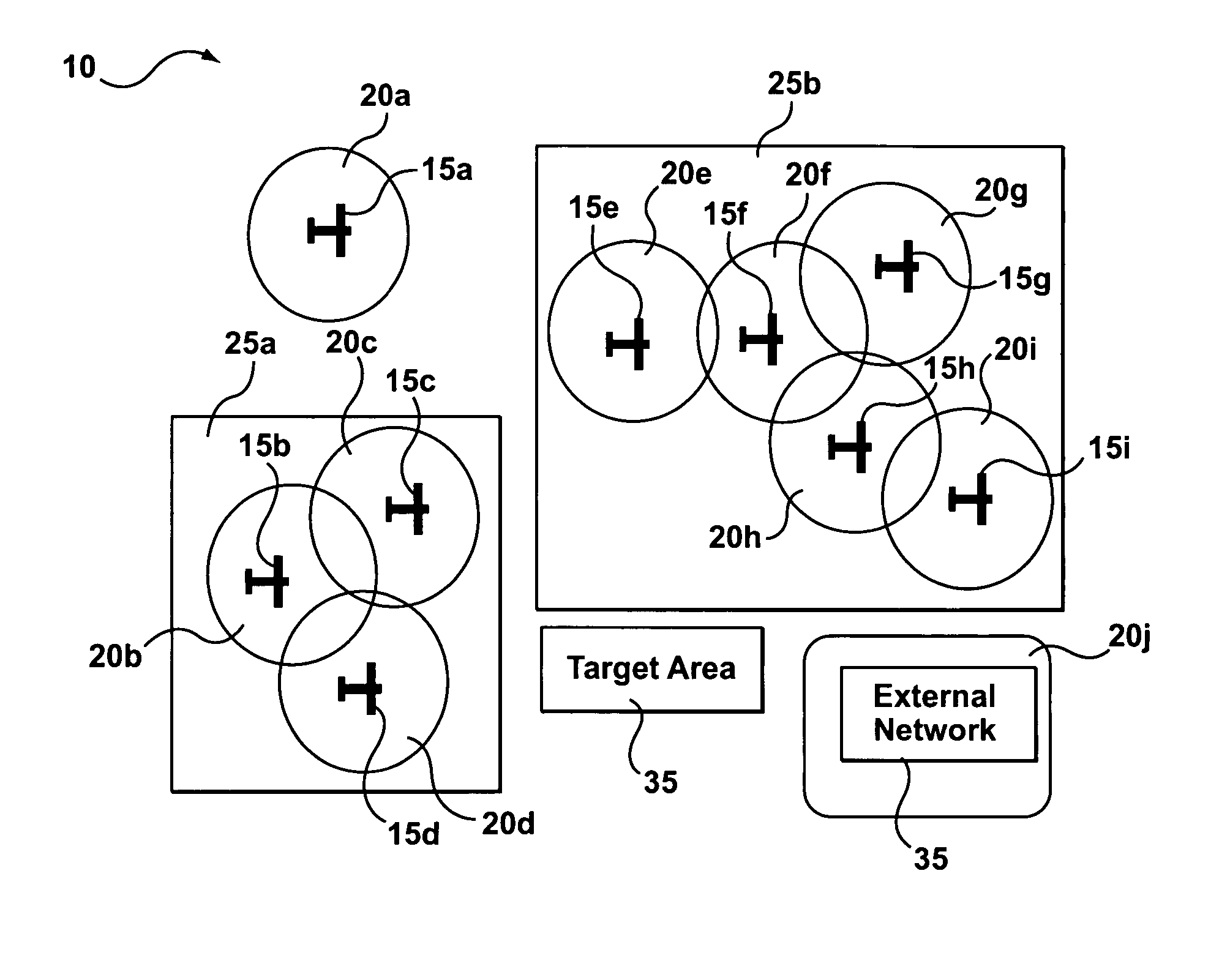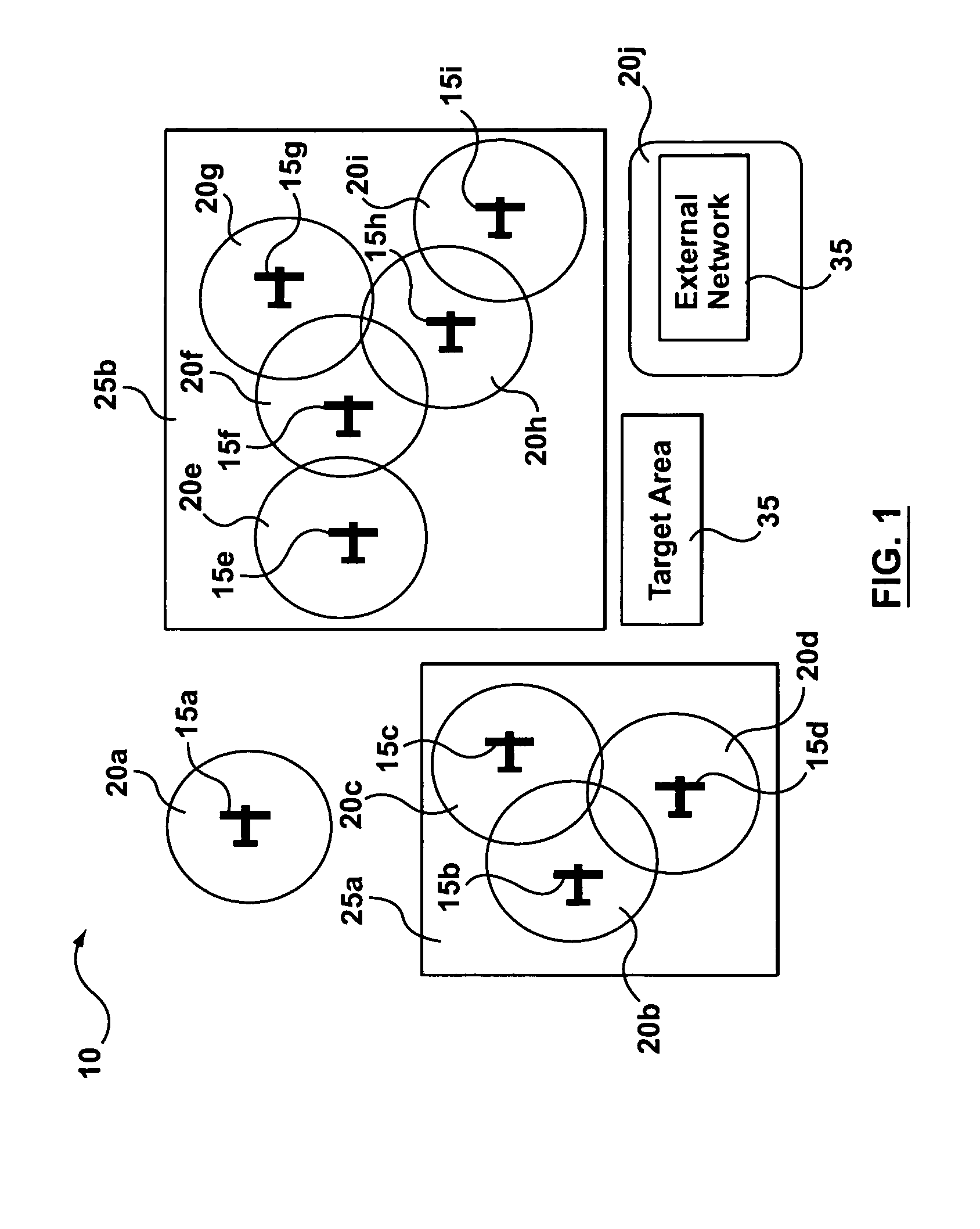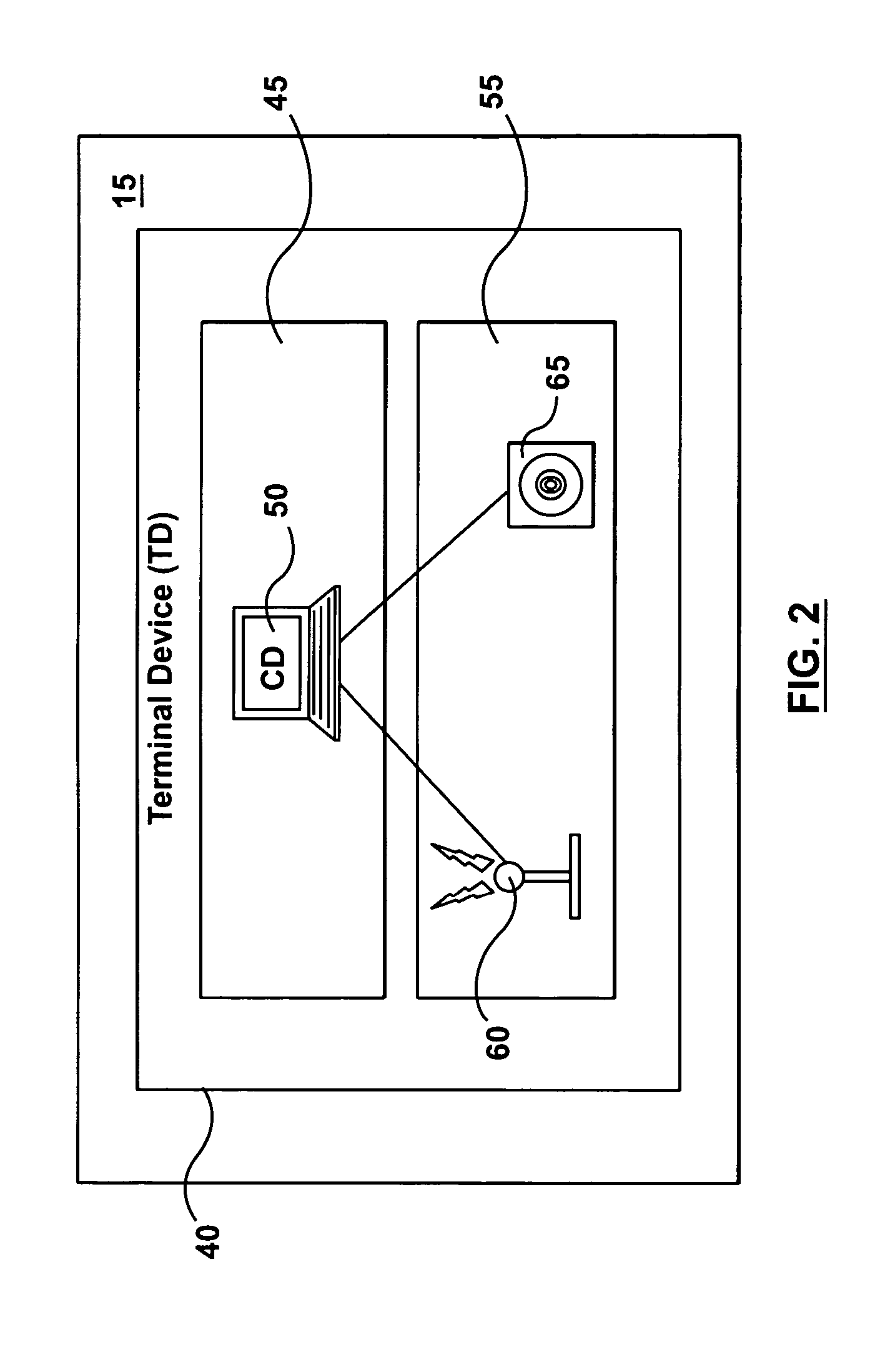System and method for a mobile AD HOC network suitable for aircraft
a mobile wireless network and ad hoc technology, applied in the field of mobile wireless networking, can solve the problems of poor operational effectiveness, ambiguity, inaccurate, slow and inconvenient, and voice communication is often error-prone, and achieves the effects of improving operational efficiency, improving safety, and improving service li
- Summary
- Abstract
- Description
- Claims
- Application Information
AI Technical Summary
Problems solved by technology
Method used
Image
Examples
second embodiment
[0091] Reference is now made again to FIG. 6 to explain the details specific to architecture 195 of TD 40 for the Communications are provided at device layer 260 by link / physical layer 265, which comprises WCT 60 that uses a Frequency Hopped-Time Division Multiple Access (FH-TDMA) method the in 900 MHz band. In the FH-TDMA method, all nodes 15 cycle synchronously through a series of frequency channels in the 900 MHz band. This aspect of the method, known as frequency hopping, ensures that all nodes 15 broadcast on the same frequency channel at the same time, and thus minimizes interference with transmission from other wireless systems. Under the TDMA aspect of the FH-TDMA method, each frequency channel is divided into multiple time slots, with different nodes 15 receiving different, unique time slots, which are then multiplexed and broadcast over the channel. In this fashion, multiple nodes 15 can be broadcast over the same channel without interference.
[0092] For this embodiment, t...
third embodiment
[0099] Use of the 802.11 protocol in the embodiment provides a number of advantages. First, 802.11 protocol interfaces and drivers are readily available on an off-the-shelf commercial basis for a large number and variety of CDs 50. This makes integration of link / physical layer 275, i.e. WCT 60 using 802.11 protocol at 2.4 GHz band, with CD 50 relatively easy. Further, use of 802.11 protocol in the 2.4 GHZ band provides for relatively high bandwidth, at least compared to FH-TDMA at 900 MHz. Thus, architecture 200 for the third embodiment is capable of supporting a comparatively larger number of nodes 15, namely 5-20 nodes 15 per cluster 25 or in network 10.
[0100] The communication range between two nodes 15 using 802.11 in the 2.4 GHz band is relatively limited (approximately 300 feet) compared to nodes 15 using FH-TDMA over 900 MHz band. However, once again, by repeating messages using hop nodes 15, i.e. multi-hopping, a source node 15 and destination node 15 may be able to communic...
PUM
 Login to View More
Login to View More Abstract
Description
Claims
Application Information
 Login to View More
Login to View More - R&D
- Intellectual Property
- Life Sciences
- Materials
- Tech Scout
- Unparalleled Data Quality
- Higher Quality Content
- 60% Fewer Hallucinations
Browse by: Latest US Patents, China's latest patents, Technical Efficacy Thesaurus, Application Domain, Technology Topic, Popular Technical Reports.
© 2025 PatSnap. All rights reserved.Legal|Privacy policy|Modern Slavery Act Transparency Statement|Sitemap|About US| Contact US: help@patsnap.com



